John Ware National Historic Person (ca. 1850–1905)
John Ware was designated as a national historic person in 2022.
Historical importance: Black cowboy who forged a successful ranching career despite racism, rough frontier conditions, and having been enslaved.
Commemorative plaque: Bar U Ranch National Historic Site, Longview, AlbertaFootnote 1
John Ware was a Black cowboy who forged a successful ranching career despite racism, rough frontier conditions, and having been enslaved. After entering the District of Alberta in 1882 on a trail crew driving thousands of cattle to the site of the Bar U Ranch, he wrangled the herds of large ranching outfits before building his own ranch with his wife Mildred and their children. He achieved success in a white-dominated industry largely controlled by well-financed corporations. Ware’s generosity and superior skill as a cowboy earned him an enduring reputation and a prominent place in the mythology of the Canadian West.
John Ware
John Ware was a Black cowboy who built a successful ranching career despite rough frontier conditions, racism, and having been enslaved. During the late 19th and early 20th centuries, Ware first herded and managed thousands of cattle and horses for extensive outfits and then developed his own ranch, realizing success in a white-dominated industry overshadowed by well-financed corporations. Ware’s remarkable skill and experience as a cowboy and rancher earned him an enduring reputation and a prominent place in the mythology of the Canadian West.
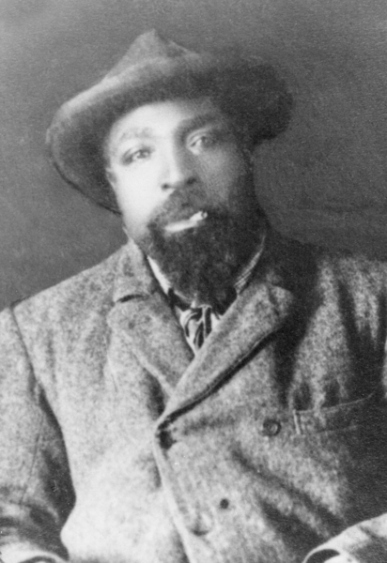
© University of Calgary
The details of this legendary Black cowboy’s early life are unclear, but histories suggest he was born as an enslaved person in the American South and worked in Texas after 1865 once he gained his freedom. In 1879, he travelled north, hired as a cowboy to drive some 2,400 cattle over three thousand kilometres to Montana, where he stayed for several years. In 1882, he met an agent of the North West Cattle Company in southern Idaho looking for cowhands to drive more than three thousand cattle north to the District of Alberta. The company was establishing a ranch on the traditional territories of the Iyarhe Nakoda (Stoney Nakoda), Siksikaitsitapi (Blackfoot), and Ktunaxa (Kootenay) First Nations. This extensive cattle operation would come to be known by its brand, the Bar U. Ware hired on for the cattle drive and stayed to work at the ranch until 1884 when he joined the newly-established Quorn Ranch, which trusted him with the management of expensive breeding stock.
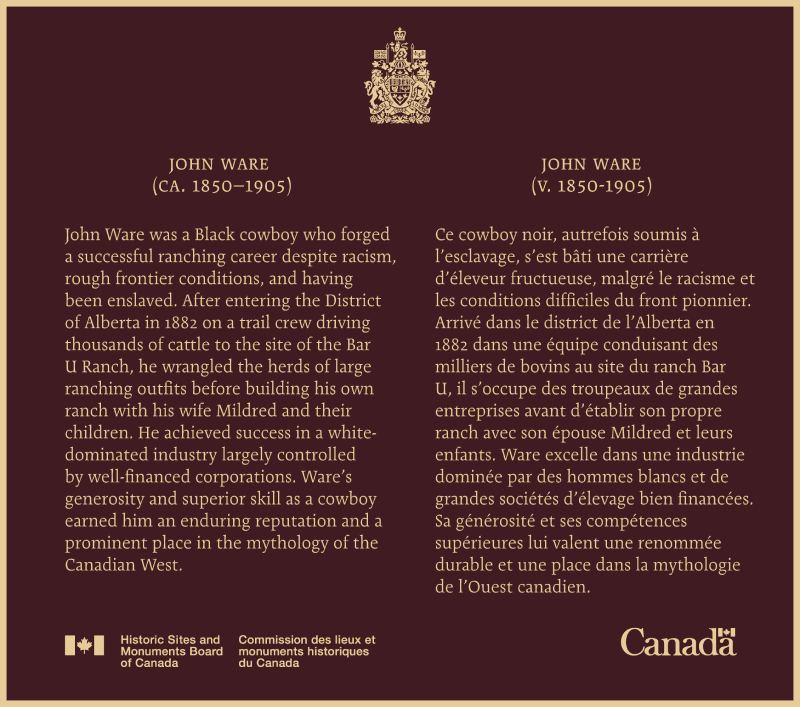
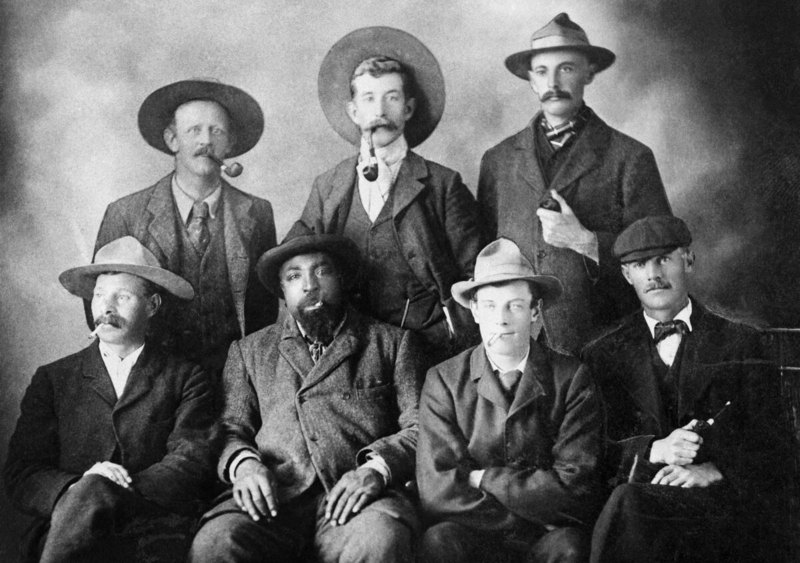
© University of Calgary
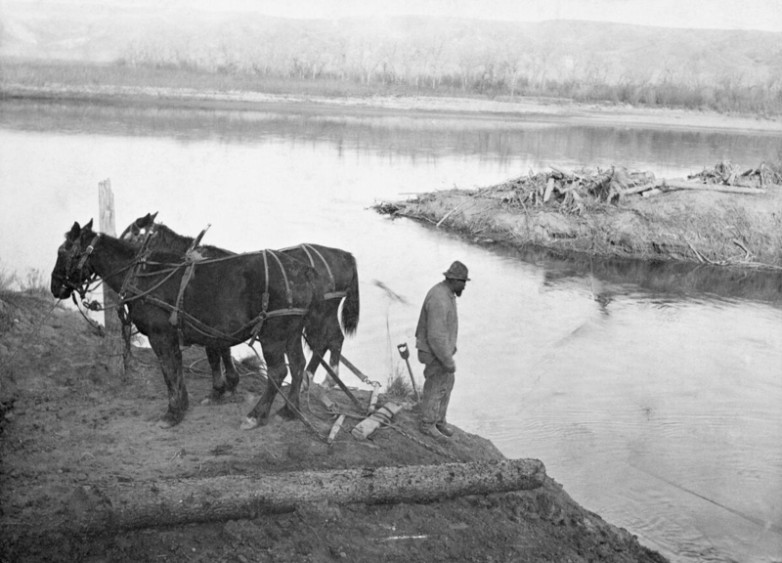
© University of Calgary
In 1888, Ware established his own small ranch on Sheep Creek, close to the Quorn outfit. His herd quickly grew to hundreds of cattle. Ware continued to work for wages at the large ranches around his homestead, and in 1890, worked for the High River Horse Ranch. In 1892, he married Mildred Lewis, the daughter of a Black homesteader and cabinetmaker who had recently arrived from Ontario. For a decade, Ware ranched on Sheep Creek, but moved east as surrounding grazing lands began to be fenced by new settlers. In 1902, Ware established a new ranch on the Red Deer River, in the Duchess area, northeast of Brooks. By this time, his family grew to include five children. The Ware family met with tragedy in 1905, when Mildred died from typhoid and pneumonia and John was killed when his horse stumbled in a badger hole. Famous in the region during his lifetime, stories of John Ware’s horsemanship, generosity, and strength are still told today, demonstrating his enduring legacy.
This press backgrounder was prepared at the time of the Ministerial announcement and plaque unveiling in 2022.

© University of Calgary
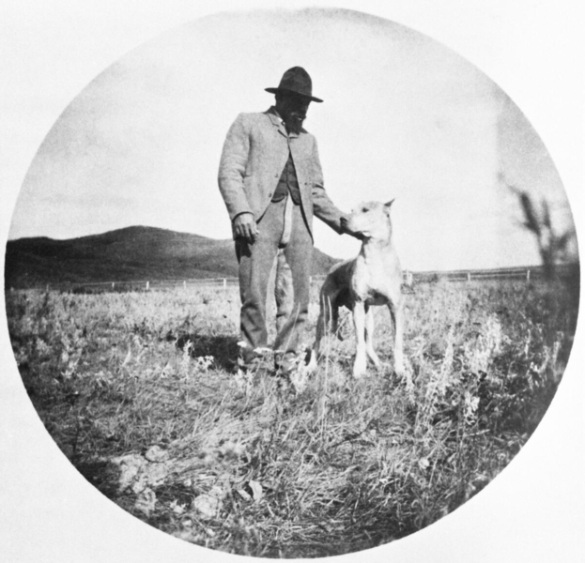
© University of Calgary

© University of Calgary
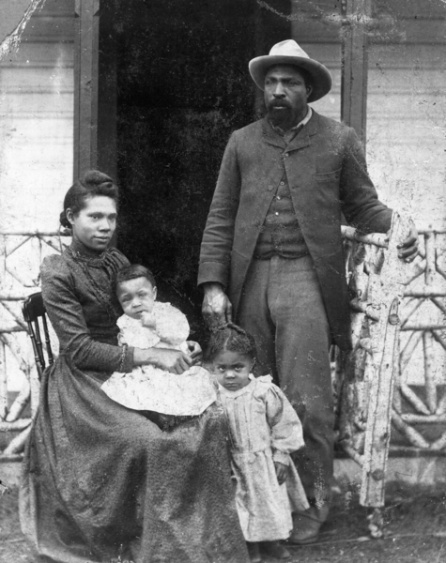
© University of Calgary
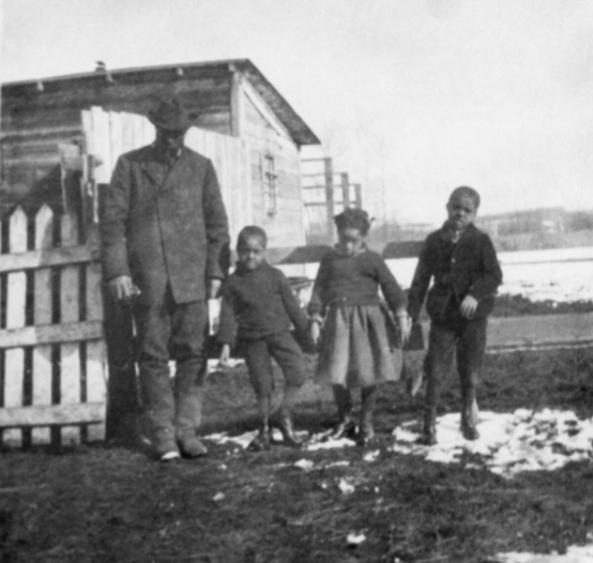
© University of Calgary
The National Program of Historical Commemoration relies on the participation of Canadians in the identification of places, events and persons of national historic significance. Any member of the public can nominate a topic for consideration by the Historic Sites and Monuments Board of Canada.
Related links
- National historic designations
- National historic persons
- National historic sites designations
- National historic events
- Submit a nomination
- This week in history: The No. 2 Construction Battalion of Nova Scotia
- The Canadian Encyclopedia: John Ware
- National Film Board of Canada: John Ware Reclaimed (film by Cheryl Foggo)
- Historica Canada Educational Portal: A lesson about John Ware
- Date modified :